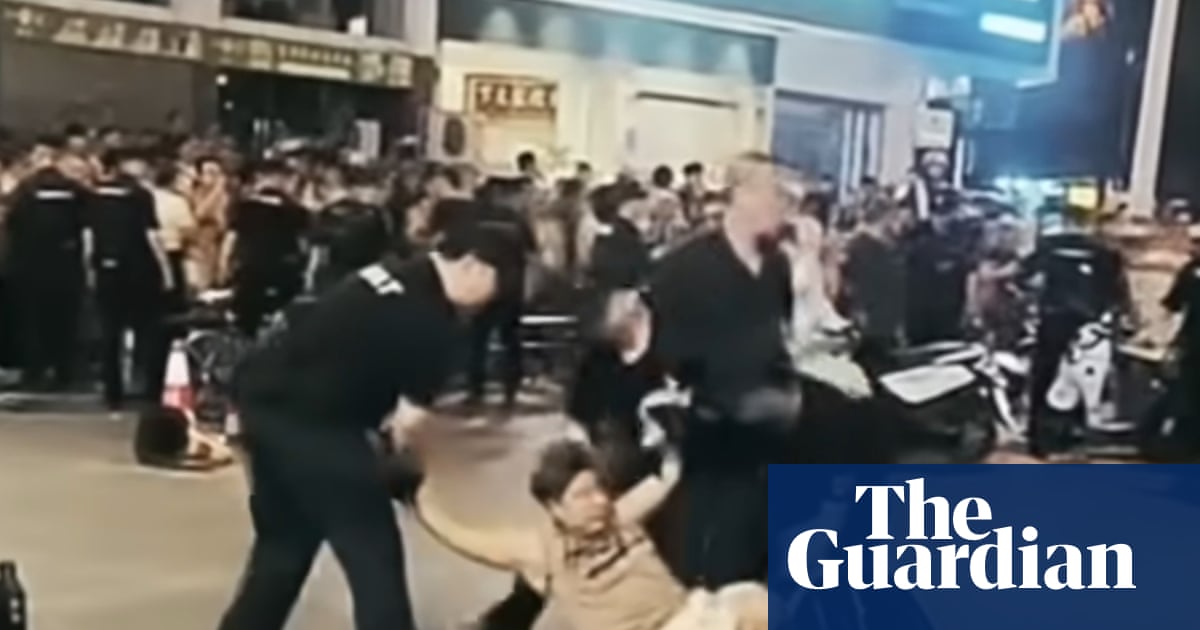
It started as an unpleasant, although not uncommon, teenage bullying incident.
On 2 August, a video appeared online, showing a group of teenage girls kicking, slapping and mocking another girl, later revealed to be aged 14, in an abandoned building in Jiangyou, a small city of 730,000 in south-west China. According to the local police, the attack, which took place on 22 July, resulted in minor injuries to the girl’s scalp and knees.
The video went viral in the local community, and soon morphed into a large-scale protest that overwhelmed the streets of Jiangyou, featuring violent clashes with the police and a concerted effort by the authorities to stop news of the event from spreading.
So what was it about this incident that prompted hundreds, perhaps even 1,000, people to gather in the streets of Jiangyou on Monday evening?
The answer may lie in a potent mixture of years of frustration at how bullying cases are handled in China, a lack of trust in local authorities, and the sometimes brutal police tactics used to suppress dissent and criticism.
One video from the scene of the protest, verified by the Guardian, is illustrative. People can be heard chanting: “Give us back democracy, reject bullying, serve the people.” They also sing the Chinese national anthem. Kevin Slaten, who runs China Dissent Monitor, a project tracking unrest in China, said the call for democracy was more likely referring to local handling of the incident rather than nationwide regime change.
Other footage shows violent clashes between police and protesters. In one confrontation, a man stands between an elderly woman who is arguing with several police officers. “What are you going to do? Are you going to drag the old person away?” he shouts. Several uniformed police and riot officers then grab him, holding him in a headlock, before dragging him away by his arms and legs.
Another video shows a riot officer hitting someone who is pinned to the ground.
The Jiangyou police department did not answer the phone when called by the Guardian.
‘People feel there’s a lot of injustice’
Early on Monday, the Jiangyou police issued a statement saying that three of the alleged bullies, aged 13, 14 and 15, had been apprehended, and that the two older girls would be sent to “specialised schools for correctional education”.
For people in Jiangyou, this was not enough to quell the anger. The parents of the victim went to a local government office, kowtowing at the feet of a local official, and begged for justice. Already, there was a crowd of onlookers.
More people soon gathered in the conference hall of the Jiangyou city government building to vent their frustration at what was perceived as an unduly lenient punishment.
By Monday evening, the anger had swelled. Hundreds of people took to the streets outside the government building. Police barricades were erected along the streets. One person who works in a business near the scene of the protest estimated that about 1,000 people turned up.
One eye-witness told the Guardian that they saw at least eight people being arrested, and that the situation escalated when the police barricades were removed at about 11.30pm on Monday. The witness said the protests got heated because of a feeling that the punishment was too light and rumours that one of the bullies had been seen playing billiards rather than being in the correctional centre. “This sparked anger among the crowd, who gathered to demand an explanation,” the witness said, adding that they had seen the police using batons. “Now people will definitely hate violent law enforcement,” they said.
School bullying is a heated topic in China, with many feeling that not enough is done to protect students.
In 2023, thousands of people protested in Henan after the death of a 14-year-old. The boy’s school said the cause of death was suicide, but his parents and local citizens suspected foul play
In Jiangyou, the scale of the anger may also reflect a more generalised distrust of the authorities, said Slaten.
There is a “lack of trust at the local level in the way that these cases are handled,” Slaten said. “People feel there’s a lot of injustice. They feel indignation about the way that authorities, in this case the school and the police, were handling this case.
“And the authorities, as people start to push for handling it differently, and these protests get more intense, they start cracking down on the protesters, and that only makes them more indignant about the response of the government.”
Slaten said the cycle of a protest about a specific grievance spiralling into a wider action against local authorities was “something that is seen quite often” in China.
Censors move in
By Tuesday morning, the authorities turned their attention towards controlling the narrative.
The hashtag for “Jiangyou” briefly topped Weibo’s trending topics chart, according to China Digital Times, a website that tracks the Chinese internet. But comments and videos were soon censored, while posts promoting the official version of events flooded social media searches.
On Tuesday, Chinese media reported that two adults surnamed Ding and Yang had been punished by the public security authorities for “fabricating rumours to attract attention” about the incident.
The crackdown on people talking about the incident was also enforced offline.
One woman who works in a shop near the local government building told the Guardian that she was not allowed to talk about the incident because “the police have already given us a verbal warning”.
Additional research by Jason Tzu Kuan Lu and Lillian Yang


